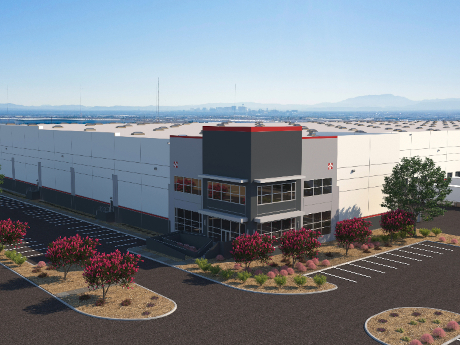— By Ted Evans —
The white hot, logistic-based real estate market in Southern California has cooled off. This is due to a combination of factors, including the end of COVID-based buying. Labor disputes, interest rate hikes and slower absorption rates are pushing business back to normal in a Western market segment supported by strong fundamentals.
Returning to Normal
As the crazed days of pandemic-induced buying slip into the past, we are seeing vacancy levels returning to pre-pandemic conditions. This may not be what some real estate investors want to hear, but the supply chain is certainly not as constricted as it was two years ago. The days of ordering products that were unavailable for weeks or months are over.
The numbers we’re seeing back up our on-the-ground assessments. According to Savills, the warehouse vacancy rate in the logistics-heavy Inland Empire jumped to 3.8 percent in the second quarter. This was compared to 1.2 percent a year earlier, which was largely driven by reduced tenant demand over this period. The national vacancy rate for the sector clocks in at 4.7 percent, proving that the logistic sun is still shining in California.
However, the increased vacancy rate is also the result of new capacity coming to market. For example, our record acquisitions in 2020 through 2022 are now in various stages of construction and leasing. All told, Dedeaux will bring more than 1 million square feet of new product to the market in 2023 and 2024. This will mostly be in the Inland Empire where Dedeaux Properties maintains high activity.
Headwinds Still Blowing
As the market matures, new facilities are taking heat from several different directions, including higher interest rates and tenants that have become more selective. We’re fielding requests about rent abatements, bathroom upgrades and LED lighting, along with questions about changing out dock doors and levelers. From a developer’s perspective, keeping things like this at the forethought of your plan is key to building a product that will move in a weaker market. Best-in-class facilities that take into account the needs and wants of users is key.
Change is also coming to the industry in the form of electrified trucks, which is causing developers to rethink how to power their buildings. Although many of the supply chain issues affecting the construction industry have been reduced, we’re still struggling to locate the switchgear needed to electrify industrial structures. Lead times for these key components can be a year.
In addition to rising hard costs in development, we’re seeing longer construction schedules coming into play, especially related to obtaining approvals from municipalities. Many zoning changes that were welcomed in the past are no longer looked at favorably.
Rising Competition
A large portion of the goods flowing into Western ports comes from China. According to recent data, the amount of Chinese imports has been falling since last October due to slowing U.S. demand, Chinese manufacturing disruptions and complications caused by the war in Ukraine.
Labor strife with dockworkers in West Coast ports has also caused additional impacts. This has forced shippers to seek safer harbors in Mexico, the East Coast and the Gulf Coast. Our understanding is negotiations are moving forward on permanent solutions that are expected to be ratified — a huge step toward a permanent labor solution.
The reverberations caused by the possibility of a dock strike can cause tenants to consider more far-flung locations in the Southwest where rents may be cheaper, but transportation costs are higher.
The good news is that even in the face of stiff competition and falling demand, the Southern California market for logistic real estate remains strong. San Francisco-based Prologis, for example, is the world’s largest builder of logistic properties. It showed a rise in its Southern California property vacancies in the second quarter, but the company’s properties are still 97 percent leased, a slight drop from the 99 percent it reported last year.
The Outlook
Vacancy rates for us right now are in the 3 percent to 4 percent range, which is healthy, but significantly higher than it was a year ago. In the near term, we’re looking to see new construction being absorbed by year’s end or by early 2024. Once the Fed gives the markets a stronger indication that we’ve hit the inflation target they are looking for, we expect things will move farther into a positive direction.
We believe that for the of the rest of the year we’ll continue to see increasing tenant interest for leasing in Southern California. We’re hearing good feedback from brokers and the phones have been busy. Financing challenges will still play a big role in how many new projects are developed and leased for the balance of the year, but from where we sit, overall, the news suggests logistic-based Southern California real estate trends should be positive.
Ted Evans, Director of Asset Management at Dedeaux Properties in Los Angeles


